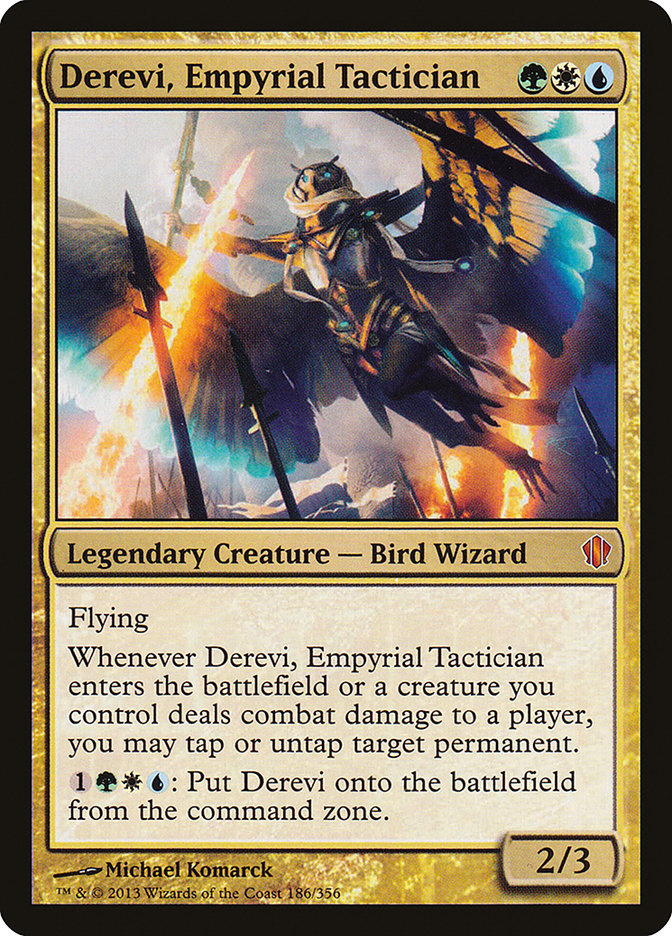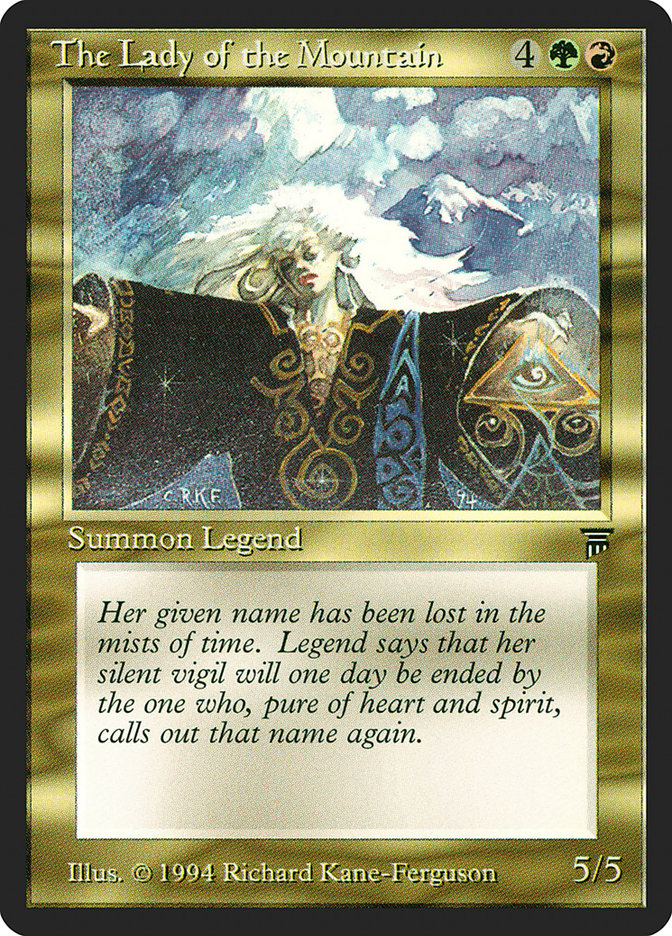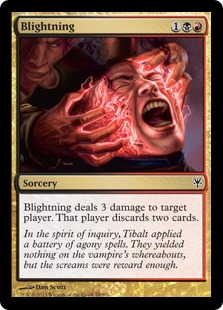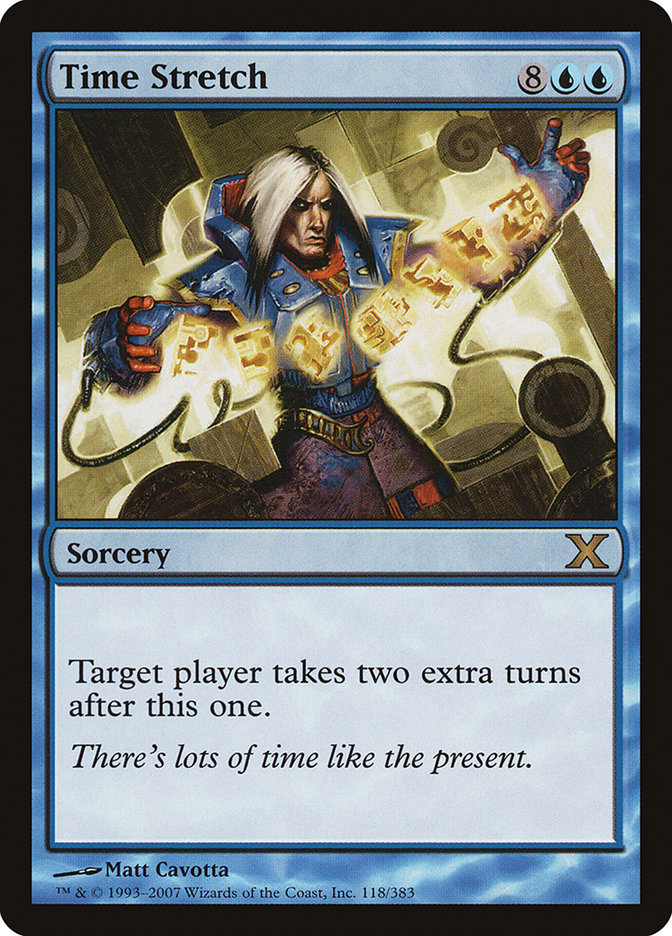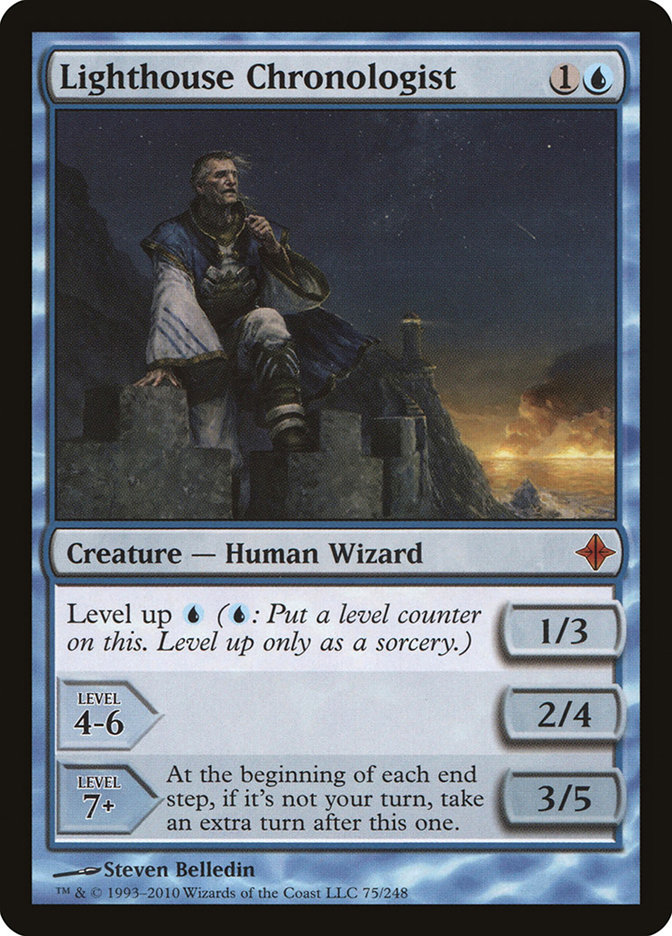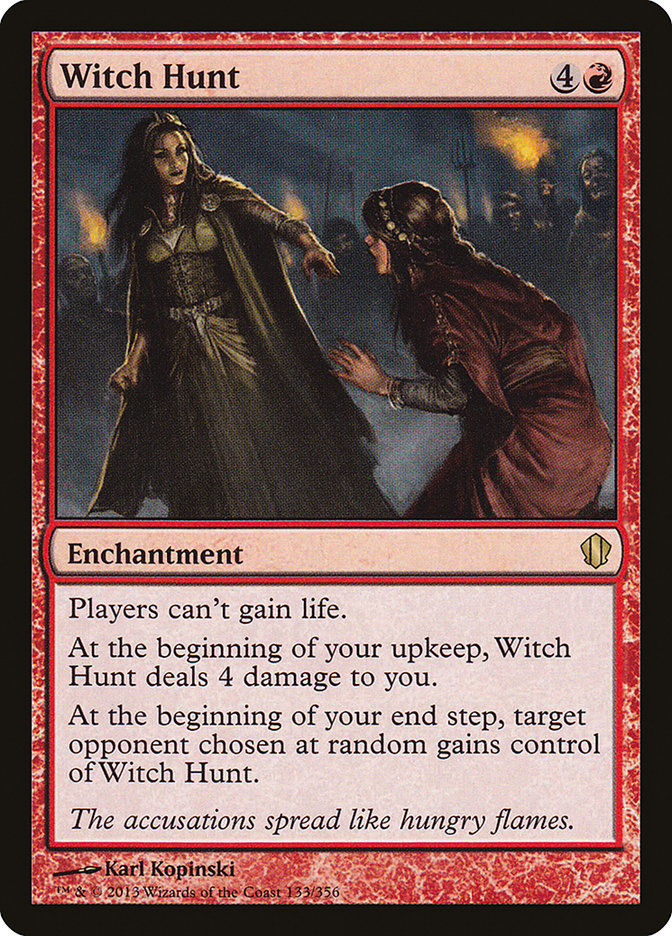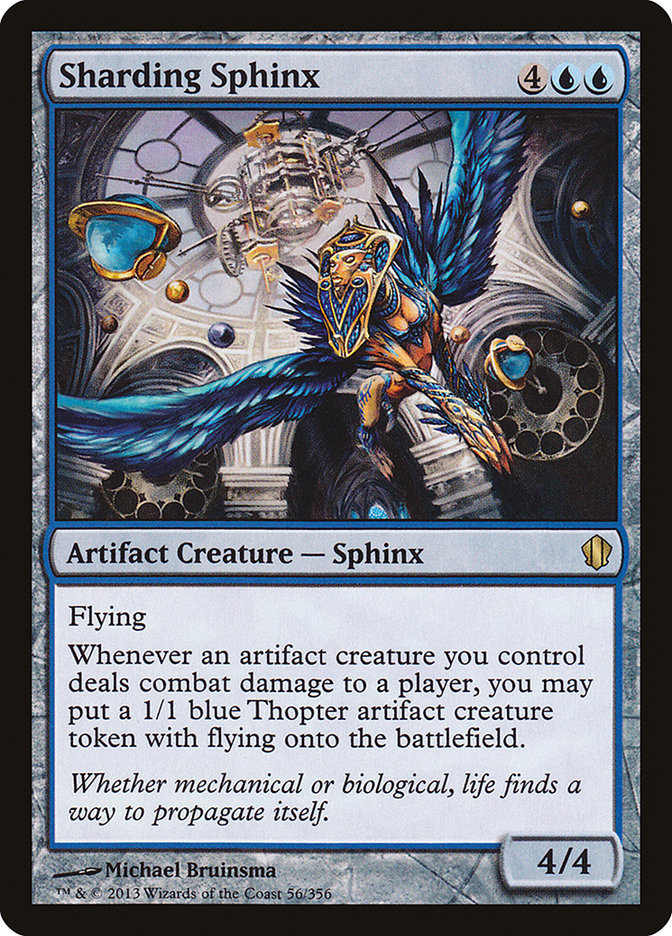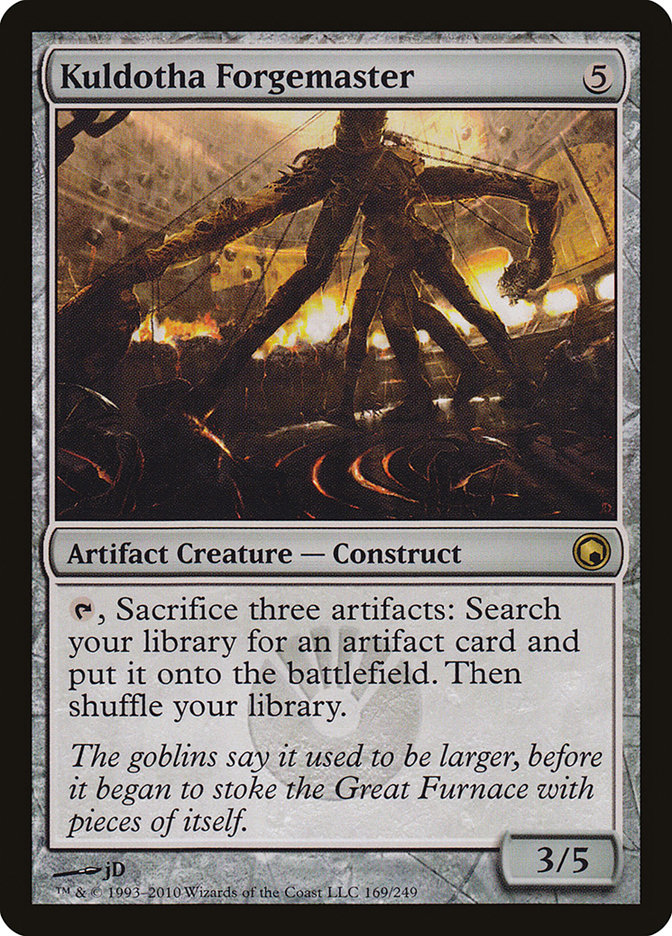Not all fun is created equal.
One of the comforts of tournament Magic that Commander doesn’t have is the general feel of goal uniformity. When you sit down and shuffle at an Open Series
event or at a Pro Tour, all the civilized effort of a gentlemen’s agreement has already been done for you. It’s been slowly honed for decades while Magic
has grown, and now, we’re at a point where most of the opponents you will face in these events will understand that it’s a competitive venture and that
you’re both there for very similar reasons. You can certainly go to a tournament with a pile of nonsense and just enjoy the fun and festivities of a lot of
good Magic-which we should all encourage-but you’ll find that most of the opponents you face will have the same goal you do in these situations.
Prereleases are sort of the exception (and perhaps even Friday Night Magic, depending on your local flavor), but that’s not important for our purposes
today.
Our purposes today (thanks for asking) lies with the difference between what you want to do in Commander and what the other good men and women at your
table want to do. For example, take three random players. One is playing a spikey Derevi deck that can kill everyone with a long solitaire turn within
minutes. One is playing a decent midrangey Angel tribal deck. One is playing some The Lady of the Mountain deck that just has a bunch of cards found in a
shoebox under the bed. We can already see that these are three players that are aiming for three different experiences, and aside from maybe the Derevi
player, nobody really even has a chance at their ideal experience.
A handful of people are playing pickup basketball. One player is committing hard fouls and being hyper competitive. Everyone else is puzzled and annoyed.
Two people are out on a date. One wants to get married within the next two years, the other has a job interview in another country the following week.
Twenty or so years ago (and probably a lot of other times since, because why not), a social experiment was conducted where a group of people sat around a
table with an empty bowl in the middle. At a steady and set time interval, someone would put one dollar in the bowl for each person at the table. As long
as no one grabbed at the bowl in the interim, the experiment conductor would double the amount of money in the bowl within a few seconds. If anyone grabbed
at it, however, they got to keep whatever money they received. The downside to that is that the group would have to wait until the end of the next time
interval for the bowl to be refilled with more money.
The only stipulation? None of them were allowed to speak to one another.
Naturally, the most ideal solution for the group of morons was to just sit and never do anything. Then, once the project went broke from doubling the
money, they could divide it up equally. Of course, what actually happened was that the money in the bowl was never doubled. They would grab at the single
dollar bills every single time they were able and were all poorer for it.
Besides being a heinously depressing commentary on the nature of human greed and general idiocy, this shows us something very important we can tie to the
Commander experience.
In general, the greater the distance between the goals of those participating, the less rewarding the experience is for the group as a whole.
Together, everyone achieves more.
Unless they don’t.
Outside of changing playgroups and other such obvious practical solutions that are available most of the time, is there a fix for this sort of unpleasant
goal diversity?
One thing many shops have done is attach a points system to play. For example, if you eliminate another player, you receive five points. If you take an
extra turn, however, you lose two points, and so on. This creates scenarios where the player who straddles the line between competitive and savory
technically wins regardless of who wins the league or the pod in the most traditional Magic sense.
These systems are perfectly fine for groups or stores who like using them, but they certainly have a few prominent issues:
– You can do a lot of different things in Magic. Having a points system to keep track of what is “okay” or “not okay” can be exhaustive, especially when
you have to attach numerical values to them to keep track of.
– Players will build the decks they want anyway, and these systems are often implemented without any back and forth with a lot of the playerbase that uses
them. Whether I have a self-mill Hermit Druid degeneracy turn 2 kill deck or a deck with all my favorite artwork, a league points system isn’t going to
change anything I’m doing. After all, the reason I’m playing Commander to begin with is that it allows me more freedom and less stress than other formats.
– Much in line with the previous point, a spike that crushes a table doesn’t care about a points system. They are still going to feel (and act) like they
won, even though nobody else at the table cares. (For the record, I like to refer to hardcore competitive Commander players who frequently terrorize
apathetic casual players as “Invisible Trophy Collectors.”)
So, now that I’ve belittled the idea of a points system, let’s create a points system.
Before we go any further, it’s important for me to illustrate that this is in no way meant as a resource for anyone who doesn’t want it to be. This isn’t a
claim to authority or an attempt at fixing whatever Commander problems may ail you.
This is a thought exercise. It is meant to open up discussion. The same frustrating “flaws” you can run into with the format are the other side of its
beauty. Ultimately, it’s your job to contribute to the health of your own Commander experience. It’s a format that represents organized Magic at its most
liberating. The more the format is policed, the less great it becomes. If you don’t like the way things are going, communicate your concerns with your
playgroup. If that doesn’t work, try to find another one.
Quantifying Fun
What I’m going to do is attempt to find some sort of general average, some subjective and loose mean, to the things that occur in Commander. Effects that
are perceived as mostly negative receive a subtracted value (-1, -2, -3, whatever). Effects that are on the other side of the scale-effects that make
people laugh, not cry–will receive added values (+1, +2, +3). This is impossible as an exact science because even within the same card or effect, the
amount of fun is entirely different depending who it affects. For instance, in a game of three players, let’s say Player A casts Blightning targeting
player B. This technically doesn’t affect Player C, but it doesn’t add to their fun either. Player A may think Blightning is fair, fun, and exciting (+2).
Player B may hate discard and think it’s idiotic (-2) or he/she may think that three damage and two cards in a format that starts at 40 life is nothing
(0), or he/she may have won a Standard tournament with Jund the day his/her baby sister was born and have the utmost fondness for those memories, somehow
giving Blightning a value of +5.
The point is, again, this is for the sake of discussion. I’m speaking in absolute generalities, which are obviously the furthest thing from absolute.
So where does your deck fall?
West’s Scale of Commander Fun
We begin with a value of 0.
How many colors is your deck? If your deck is only a single color or colorless, +3. If it’s mono-red, add an additional +1. If your deck is two colors, +2.
Three colors, +1. If your deck is five-color, stay at 0.
If you’re in all five colors and you have a prominent theme (Allies, no creatures, all Rebecca Guay art), +3.
How many tutors are in your deck? For each specialized non-land tutor (Mystical Tutor, Enlightened Tutor), add -1 for each one beyond the first. For
general tutors (Demonic Tutor, Vampiric Tutor) get -1 for each. I probably wouldn’t add or subtract anything from something like Captain Sisay. Judge
yourself accordingly.
How many extra turns can your deck take? For each extra turn beyond the first, add -1. For instance, Time Warp on its own doesn’t change anything. Time
Stretch gives -1. I’d also give Lighthouse Chronologist 0 on its own because of its vulnerability. A deck with Lighthouse Chronologist and Time Stretch,
however, would get -2.
Does your deck have cards that end the game immediately most of the time they’re cast? Tooth and Nail? Cyclonic Rift? -3.
Card draw is so varied and situational based on the type and the gamestate that assigning it a flat value is a waste of time. A Recurring Insight on turn 6
or 7 is perfectly reasonable. Cheating Consecrated Sphinx into play on turn 2 really isn’t. Adjust accordingly.
On the more positive side, if you’re playing a commander that isn’t one of the more popular competitive commanders (Derevi, Vendilion Clique, Azami), +3.
If you’re playing a blatantly garbage commander (Legends vanillas), +4.
Does your deck have a funny theme? Does it play unusual cards for the sake of multiplayer goofiness? If you’re playing with stuff like Witch Hunt or
Springjack Pasture, +3.
Since this exercise is hopelessly relative, let’s get into some specifics and let me lead by example.
Creatures (29)
- 1 Sakura-Tribe Elder
- 1 Solemn Simulacrum
- 1 Akroma, Angel of Wrath
- 1 Eternal Witness
- 1 Yavimaya Elder
- 1 Karmic Guide
- 1 Reya Dawnbringer
- 1 Blazing Archon
- 1 Tolsimir Wolfblood
- 1 Juniper Order Ranger
- 1 Saffi Eriksdotter
- 1 Vigor
- 1 Twilight Shepherd
- 1 Wilt-Leaf Liege
- 1 Knight of the Reliquary
- 1 Ant Queen
- 1 Baneslayer Angel
- 1 Master of the Wild Hunt
- 1 Emeria Angel
- 1 Oracle of Mul Daya
- 1 Rampaging Baloths
- 1 Stoneforge Mystic
- 1 Wolfbriar Elemental
- 1 Sun Titan
- 1 Elesh Norn, Grand Cenobite
- 1 Geist-Honored Monk
- 1 Avacyn, Angel of Hope
- 1 Yeva, Nature's Herald
- 1 Trostani, Selesnya's Voice
Planeswalkers (2)
Lands (33)
- 1 Strip Mine
- 1 Brushland
- 5 Forest
- 5 Plains
- 1 Reflecting Pool
- 1 Savannah
- 1 Eiganjo Castle
- 1 Windswept Heath
- 1 Flooded Strand
- 1 Temple of the False God
- 1 Yavimaya Hollow
- 1 Krosan Verge
- 1 Selesnya Sanctuary
- 1 Temple Garden
- 1 Vitu-Ghazi, the City-Tree
- 1 Flagstones of Trokair
- 1 Vesuva
- 1 Dryad Arbor
- 1 Horizon Canopy
- 1 Mosswort Bridge
- 1 Verdant Catacombs
- 1 Stirring Wildwood
- 1 Command Tower
- 1 Homeward Path
- 1 Gavony Township
Spells (35)
- 1 Sensei's Divining Top
- 1 Wrath of God
- 1 Tooth and Nail
- 1 Swords to Plowshares
- 1 Sylvan Library
- 1 Sol Ring
- 1 Regrowth
- 1 Rampant Growth
- 1 Kodama's Reach
- 1 Mirari's Wake
- 1 Rude Awakening
- 1 Worldly Tutor
- 1 Sword of Fire and Ice
- 1 Skullclamp
- 1 Lightning Greaves
- 1 Mind's Eye
- 1 Natural Affinity
- 1 Greater Good
- 1 Eladamri's Call
- 1 Skyshroud Claim
- 1 Aura Shards
- 1 Glare of Subdual
- 1 Krosan Grip
- 1 Harmonize
- 1 Primal Command
- 1 Relic of Progenitus
- 1 Martial Coup
- 1 Summoning Trap
- 1 Explore
- 1 Cultivate
- 1 Green Sun's Zenith
- 1 Beast Within
- 1 Increasing Devotion
- 1 Entreat the Angels
- 1 Rain of Thorns

This is the deck that most represents me as a player and person, which was my initial deckbuilding goal when first embracing the format.
Starting from 0…
Tolsimir is almost assuredly worse than something like Rhys the Redeemed. +2 for underpowered commander factor.
Tooth and Nail is obnoxious. -3.
Rude Awakening can also end games a tad prematurely, especially with Elesh Norn. -1.
Natural Affinity + Elesh Norn is criminal. -3.
Sun Titan + Strip Mine. Uncool but also slow most of the time. -1.
Land count is low because it allows me to fit in more cards I enjoy. +1.
Angel subtheme. Token subtheme. Wolves, baby, Wolves. +2 for tribal cohesion.
Card draw in reasonable quantities. +2.
Stoneforge Mystic tutors. Worldly Tutor tutors. Eladamri’s Call tutors. Tooth and Nail tutors. Green Sun’s Zenith tutors. Little much. -4.
Flashing in your commander with Yeva, Nature’s Herald is world-class fun. +1.
Sensei’s Divining Top is a development disaster and should be erased from Earth. -1.
Sol Ring is obviously status quo, but there’s not a ton of artifact mana. Mana Crypt is a sure sign someone is trying too hard most of the time. +2.
Deck is two colors. +2.
Flexible hate cards that don’t sacrifice the deck’s vibe are around in fair moderation. +1.
I think that’s sufficient. So where does that leave me?
According to my lazy and possibly inaccurate math, this deck would be at around 0. While that isn’t shameful, it’s also far from where I like to be
personally. And in fact, that’s exactly what I did a while ago.
This is a small handful of cards I removed from the deck a few months back:
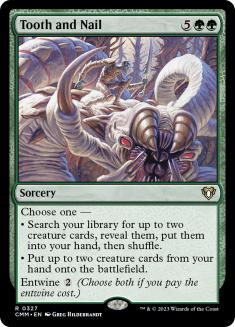
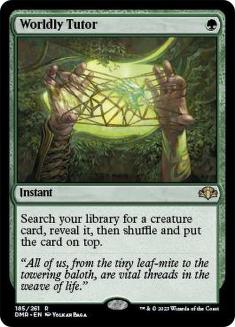
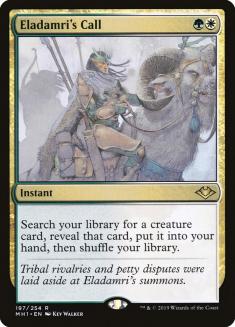
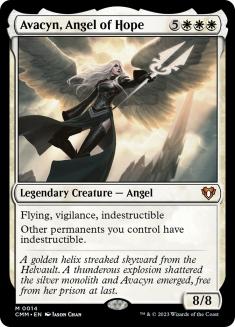
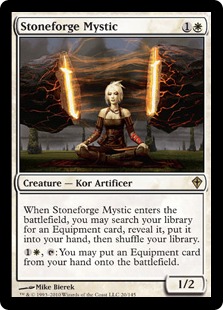
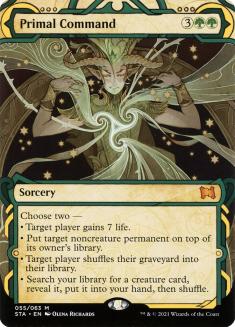

Here are a few cards I added in their place:
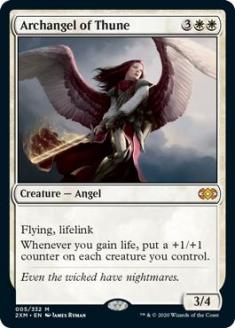
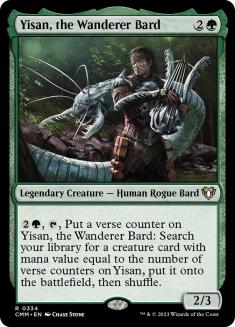
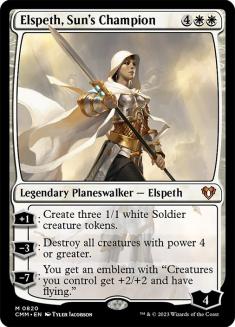
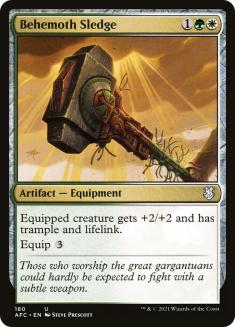
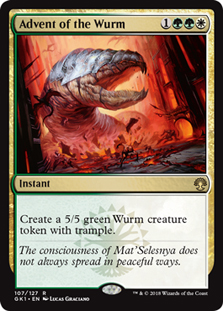
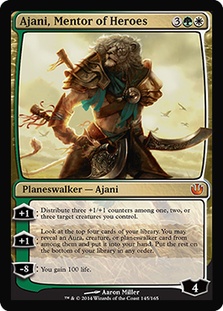

Spike Feeder was in the deck with Archangel for about three days. That’s enough of that…
You’ll see I replaced a lot of the boring obvious game-enders with cards with a lot more conditional advantages, none of which feel like unfair nonsense.
This new incarnation would be much closer to a +5 or +6, which is where I like to play (and play against).
Creatures (21)
- 1 Sakura-Tribe Elder
- 1 Azusa, Lost but Seeking
- 1 Solemn Simulacrum
- 1 Eternal Witness
- 1 Yavimaya Elder
- 1 Coiling Oracle
- 1 Venser, Shaper Savant
- 1 Mulldrifter
- 1 Woodfall Primus
- 1 Glen Elendra Archmage
- 1 Acidic Slime
- 1 Lotus Cobra
- 1 Oracle of Mul Daya
- 1 Avenger of Zendikar
- 1 Kozilek, Butcher of Truth
- 1 Consecrated Sphinx
- 1 Phyrexian Metamorph
- 1 Damia, Sage of Stone
- 1 Rune-Scarred Demon
- 1 Snapcaster Mage
- 1 Prophet of Kruphix
Planeswalkers (2)
Lands (37)
- 1 Strip Mine
- 5 Forest
- 1 Llanowar Wastes
- 1 Underground River
- 3 Swamp
- 4 Island
- 1 Underground Sea
- 1 Tropical Island
- 1 Bayou
- 1 Polluted Delta
- 1 Temple of the False God
- 1 Riptide Laboratory
- 1 Yavimaya Coast
- 1 Overgrown Tomb
- 1 Watery Grave
- 1 Breeding Pool
- 1 Terramorphic Expanse
- 1 Urborg, Tomb of Yawgmoth
- 1 Dryad Arbor
- 1 Reliquary Tower
- 1 Drowned Catacomb
- 1 Misty Rainforest
- 1 Verdant Catacombs
- 1 Halimar Depths
- 1 Command Tower
- 1 Hinterland Harbor
- 1 Woodland Cemetery
- 1 Cavern of Souls
Spells (39)
- 1 Sensei's Divining Top
- 1 Hinder
- 1 Hymn to Tourach
- 1 Counterspell
- 1 Vampiric Tutor
- 1 Mystical Tutor
- 1 Tooth and Nail
- 1 Force of Will
- 1 Time Warp
- 1 Sylvan Library
- 1 Sol Ring
- 1 Demonic Tutor
- 1 Opportunity
- 1 Forbid
- 1 Rampant Growth
- 1 Future Sight
- 1 Decree of Pain
- 1 Merchant Scroll
- 1 Crucible of Worlds
- 1 Worldly Tutor
- 1 Desertion
- 1 Lightning Greaves
- 1 Phyrexian Arena
- 1 Bribery
- 1 Confiscate
- 1 Skyshroud Claim
- 1 Mystical Teachings
- 1 Damnation
- 1 Harmonize
- 1 Cryptic Command
- 1 Mana Reflection
- 1 Explore
- 1 Green Sun's Zenith
- 1 Beast Within
- 1 Rain of Thorns
- 1 Boundless Realms
- 1 Staff of Nin
- 1 Chromatic Lantern
- 1 Cyclonic Rift

This is more on the opposite end of the spectrum. I won’t painstakingly go through the details, but a deck like this would probably end up at -8 or -9.
Obviously, I don’t think this deck would be much of a thrill to play against. This deck also illustrates a few important points about the relativity of
this discussion. This deck has a good bit of counter-magic, which has a certain stigma against in certain circles. A crucial component of Commander,
however, is multiplayer. Playing against three or four players makes most counterspells far worse than in one-on-one. I also think it’s important to let
control decks be themselves in Commander. I find that this deck is a little in the negative based on its number of cutthroat interactions and its tutor
quantities more than anything to do with cards like Cryptic Command or Forbid.
Creatures (23)
- 1 Waterfront Bouncer
- 1 Ramirez DePietro
- 1 Great Whale
- 1 Skeleton Ship
- 1 Old Man of the Sea
- 1 Drowned Rusalka
- 1 Deep-Sea Kraken
- 1 Sygg, River Cutthroat
- 1 Kederekt Leviathan
- 1 Inkwell Leviathan
- 1 Lorthos, the Tidemaker
- 1 Wrexial, the Risen Deep
- 1 Stormtide Leviathan
- 1 Master Thief
- 1 Deadeye Navigator
- 1 Baleful Strix
- 1 Shipbreaker Kraken
- 1 Thassa, God of the Sea
- 1 Master of Waves
- 1 Tromokratis
- 1 Sigiled Starfish
- 1 Scourge of Fleets
- 1 Stormsurge Kraken
Lands (36)
Spells (41)
- 1 Treachery
- 1 Steal Artifact
- 1 Piracy
- 1 Prosperity
- 1 Cruel Bargain
- 1 Darksteel Ingot
- 1 Acquire
- 1 Desertion
- 1 Sword of Fire and Ice
- 1 Bribery
- 1 High Tide
- 1 Treasure Trove
- 1 Trade Routes
- 1 Evacuation
- 1 Confiscate
- 1 Coastal Piracy
- 1 Blatant Thievery
- 1 Abduction
- 1 Reins of Power
- 1 Customs Depot
- 1 Attrition
- 1 Dimir Signet
- 1 Commandeer
- 1 Piracy Charm
- 1 Slaughter Pact
- 1 Profane Command
- 1 Dire Undercurrents
- 1 Memory Plunder
- 1 Expedition Map
- 1 Explorer's Scope
- 1 Grappling Hook
- 1 Hideous End
- 1 Into the Roil
- 1 Lux Cannon
- 1 Stolen Goods
- 1 Murder
- 1 Dimir Cluestone
- 1 Toxic Deluge
- 1 Whelming Wave
- 1 Treasure Cruise
- 1 Briber's Purse

This deck is +100. This is not debatable.
Creatures (36)
- 1 Metalworker
- 1 Solemn Simulacrum
- 1 Hanna, Ship's Navigator
- 1 Memnarch
- 1 Vedalken Archmage
- 1 Duplicant
- 1 Neurok Transmuter
- 1 Scarecrone
- 1 Filigree Sages
- 1 Master of Etherium
- 1 Sharding Sphinx
- 1 Sharuum the Hegemon
- 1 Sphinx Summoner
- 1 Sen Triplets
- 1 Pilgrim's Eye
- 1 Steel Overseer
- 1 Wurmcoil Engine
- 1 Palladium Myr
- 1 Grand Architect
- 1 Kuldotha Forgemaster
- 1 Etched Champion
- 1 Shimmer Myr
- 1 Phyrexian Metamorph
- 1 Drogskol Reaver
- 1 Baleful Strix
- 1 Archangel of Thune
- 1 Burnished Hart
- 1 Sydri, Galvanic Genius
- 1 Muzzio, Visionary Architect
- 1 Soul of New Phyrexia
- 1 Chief Engineer
- 1 Whirler Rogue
- 1 Chief of the Foundry
- 1 Sire of Stagnation
- 1 Ruination Guide
- 1 Tide Drifter
Planeswalkers (2)
Lands (36)
- 5 Plains
- 5 Swamp
- 5 Island
- 1 Temple of the False God
- 1 Darksteel Citadel
- 1 Dimir Aqueduct
- 1 Orzhov Basilica
- 1 Azorius Chancery
- 1 Academy Ruins
- 1 Terramorphic Expanse
- 1 Urza's Factory
- 1 Arcane Sanctum
- 1 Esper Panorama
- 1 Drowned Catacomb
- 1 Glacial Fortress
- 1 Bojuka Bog
- 1 Evolving Wilds
- 1 Command Tower
- 1 Buried Ruin
- 1 Isolated Chapel
- 1 Foundry of the Consuls
- 1 Shrine of the Forsaken Gods
- 1 Shambling Vent
- 1 Spawning Bed
Spells (26)
- 1 Kusari-Gama
- 1 Swords to Plowshares
- 1 Sol Ring
- 1 Diabolic Tutor
- 1 Darksteel Ingot
- 1 Acquire
- 1 Desertion
- 1 Well of Lost Dreams
- 1 Mindslaver
- 1 Gilded Lotus
- 1 Cranial Plating
- 1 Argivian Restoration
- 1 Dromar's Charm
- 1 Akroma's Memorial
- 1 Armillary Sphere
- 1 Expedition Map
- 1 Elixir of Immortality
- 1 Tempered Steel
- 1 Unwinding Clock
- 1 Swiftfoot Boots
- 1 Staff of Nin
- 1 Spear of Heliod
- 1 Utter End
- 1 Thopter Spy Network
- 1 Hedron Archive
- 1 Painful Truths

At the risk of sounding dramatic, I think Abe Sargent’s Sydri deck is an absolute masterpiece.
This deck has a popular commander with every capability to be an unfun party crasher, and Abe has built a deck here that is purposefully tweaked in such a
way that it stays completely on-theme, competitive, and interesting without sacrificing fun for everyone else. The tutors are all overcosted intentionally
(Diabolic Tutor) or fragile (Tezzeret the Seeker, Kuldotha Forgemaster). It’s loaded with surprises that are as synergistic as they are interesting
(Sharding Sphinx, Drogskol Reaver). I don’t know where this deck falls, but I’d have to assume it’s the money spot (+4, +5, maybe?). It is the ideal
combination of competitive and fun, and it’s obvious that Abe has spent a lot of time maximizing the deck for both his benefit and that of his opponents.
Creatures (23)
- 1 Solemn Simulacrum
- 1 Moggcatcher
- 1 Kiki-Jiki, Mirror Breaker
- 1 Goblin Warchief
- 1 Mogg Maniac
- 1 Anger
- 1 Siege-Gang Commander
- 1 Goblin Chirurgeon
- 1 Squee, Goblin Nabob
- 1 Goblin Marshal
- 1 Mogg War Marshal
- 1 Goblin Chieftain
- 1 Warren Instigator
- 1 Rapacious One
- 1 Tuktuk the Explorer
- 1 Spikeshot Elder
- 1 Beetleback Chief
- 1 Krenko, Mob Boss
- 1 Legion Loyalist
- 1 Young Pyromancer
- 1 Purphoros, God of the Forge
- 1 Scourge of the Throne
- 1 Zada, Hedron Grinder
Lands (39)
- 19 Mountain
- 1 Shinka, the Bloodsoaked Keep
- 1 Goblin Burrows
- 1 Winding Canyons
- 1 Terrain Generator
- 1 Mikokoro, Center of the Sea
- 1 Miren, the Moaning Well
- 1 Kher Keep
- 1 Vesuva
- 1 Mutavault
- 1 Reliquary Tower
- 1 Valakut, the Molten Pinnacle
- 1 Inkmoth Nexus
- 1 Homeward Path
- 1 Cavern of Souls
- 1 Thespian's Stage
- 1 Opal Palace
- 1 Myriad Landscape
- 1 Arcane Lighthouse
- 1 Flamekin Village
- 1 Mage-Ring Network
Spells (38)
- 1 Blazing Shoal
- 1 Nevinyrral's Disk
- 1 Goblin Warrens
- 1 Sol Ring
- 1 Journeyer's Kite
- 1 Goblin Bombardment
- 1 Mogg Infestation
- 1 Skullclamp
- 1 Mana Geyser
- 1 Insurrection
- 1 Commando Raid
- 1 Aleatory
- 1 Mind Stone
- 1 Seething Anger
- 1 Chaotic Strike
- 1 Accelerate
- 1 Balduvian Rage
- 1 Reiterate
- 1 Brute Force
- 1 Fatal Frenzy
- 1 Crimson Wisps
- 1 Soul's Fire
- 1 Dreamstone Hedron
- 1 Nim Deathmantle
- 1 Swiftfoot Boots
- 1 Past in Flames
- 1 Mass Mutiny
- 1 Titan's Strength
- 1 Fall of the Hammer
- 1 Twinflame
- 1 Crowd's Favor
- 1 Unstable Obelisk
- 1 Commander's Sphere
- 1 Temur Battle Rage
- 1 Mob Rule
- 1 Tail Slash
- 1 Pyromancer's Goggles
- 1 Hedron Archive

This is another recent deck I have a lot of respect for. Going mono-red has historically been its own challenge anyway, but this deck features a ton of
thematic elements that work together harmoniously. Zada is inherently fun and interesting, and Bennie has done a terrific job of constructing a deck that
would keep me both amused and on-guard. As red gets more reasonable options, we should see its presence increase. Zada is the latest example of this
much-needed improvement.
Ask Not What Your Playgroup Can Do For You…
I hope that this discussion sparks even more discussion about the format and what we all want from it. I’m excited at the crazy sample size I’ll be able to
get at Grand Prix Atlanta. Although spending time with one or two playgroups will only provide you a snapshot of what people are doing with Commander,
playing with dozens of players from all over should give me a great idea of just how diverse strategies and format expectations are from the population.
Until next time, quantify yourself. Challenge yourself to not just build decks that win but to build decks that allow everyone to feel like they
won.

